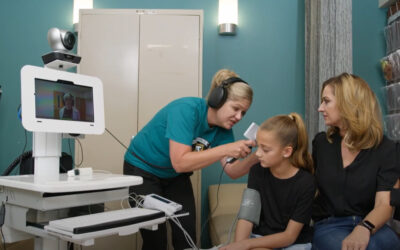With telehealth taking an increasingly prominent place in the world of healthcare, organizations are trying to figure out the best way to make this feature work seamlessly with the rest of their internal systems. For many, the most obvious solution has been to rely on a third-party vendor to provide telehealth services and then work to make that service interoperable with existing electronic health records (EHR).
While this might seem like the path of least resistance, in truth, relying on an outside vendor to provide reliable EHR interoperability might end up being the most costly and complicated option available.
For one, it takes a significant amount of time and money for a vendor to successfully map its service to a healthcare provider’s existing systems. For another, if a telehealth vendor captures and stores data outside of a provider’s electronic medical records (EMR), it can be harder to ensure HIPAA compliance.
These complications are more than theoretical. Research has shown that telemedicine interoperability often results in a fragmented, redundant, and costly mess. Instead, healthcare organizations should look to integration as a better solution when it comes to telehealth.

Integration vs. Interoperability: What’s the Difference?
Unlike interoperability, telemedicine EMR integration doesn’t hand over the responsibilities of capturing and storing data to third-party vendors. Instead, it simply borrows the data from an EMR, pulling in relevant information for a specific encounter and then pushing in updated data when that encounter ends. This effectively eliminates the risks and complications associated with third-party data storage.
Of course, successful integration still requires the right technology and expertise to implement. That’s where AMD Global Telemedicine comes in.
How AMD’s Encounter Software Creates a Better Telemedicine Solution
Telemedicine software can feel like a true part of your everyday practice rather than a disconnected experience with proper integration. AMD Global Telemedicine integrates telemedicine into your existing workflow, making the experience as close to in-person as possible.
Our solution can be set up to directly push and pull data from your EHR and export encounter reports for your records. Meanwhile, our experienced team can guide you through the integration process, helping you choose options that enhance your workflow and eliminate the need for data re-entry. The goal is not only to streamline workflows but also to reduce the risk of errors caused by redundant data entry.
AMD also offers connected telemedicine devices that provide true integration into your organization. These devices connect to our platform, streaming images during an encounter that can be saved to the patient’s record as part of their virtual visit. This tight-knit integration is what keeps telehealth documentation from becoming a separate island of care.
While interoperable technology can be the right choice for many industries, it has the potential to create more headaches than solutions in healthcare. This is especially true when it comes to telemedicine software and devices. Integration is the wiser path forward for HIPAA-compliant telehealth solutions that work well within existing systems.
To learn more about AMD’s integration capabilities and connected devices, get in touch today.



